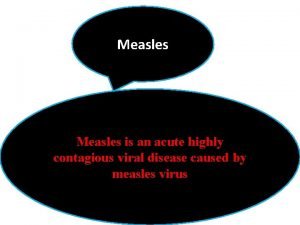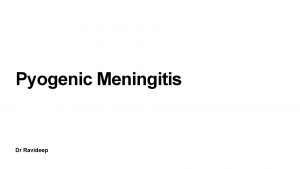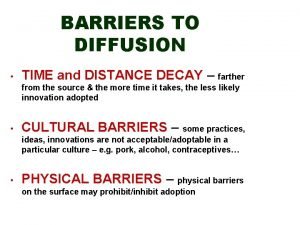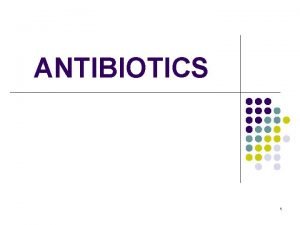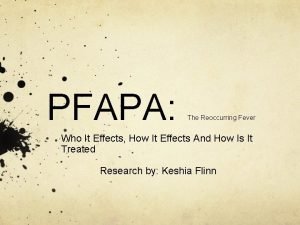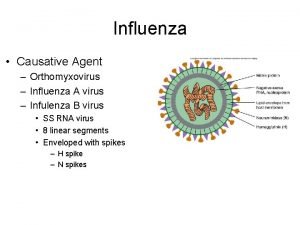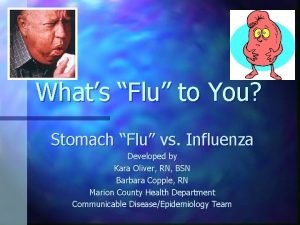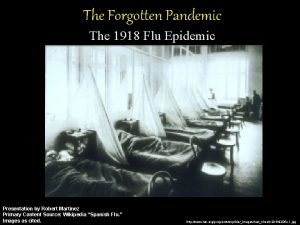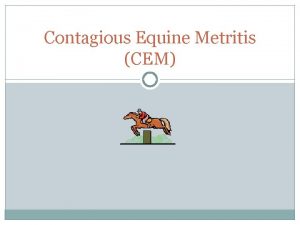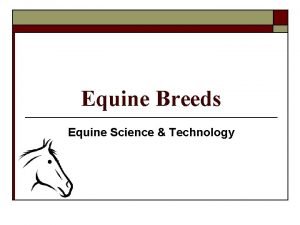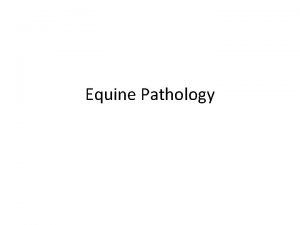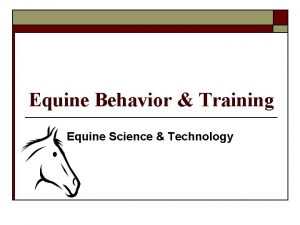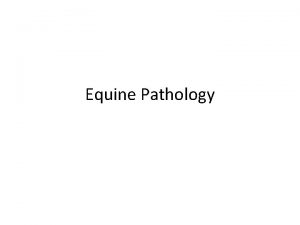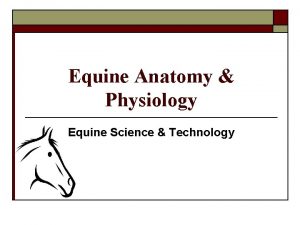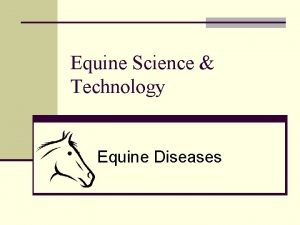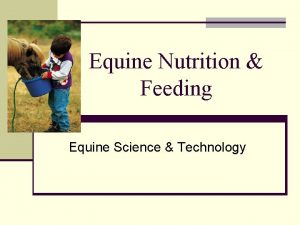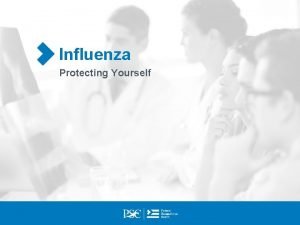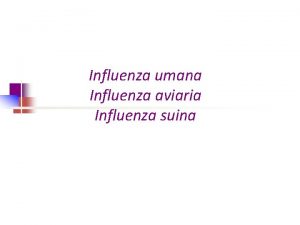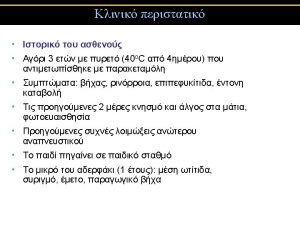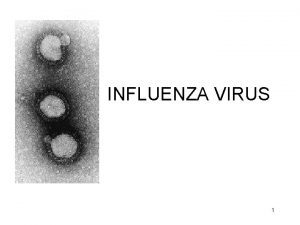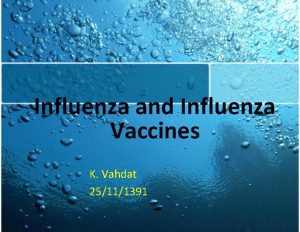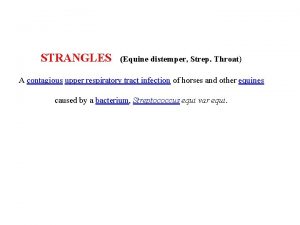EQUINE INFLUENZA 1 EI is an acute contagious





















- Slides: 21

EQUINE INFLUENZA 1

EI is an acute contagious viral respiratory disease of equines characterized clinically by severe cough, mild fever, serous to mucopurulent discharges. 2

Influenza (EI) is a highly contagious though rarely fatal respiratory disease of horses, donkeys and mules and other equidae. 3

The disease has been recorded throughout history, and when horses were the main draft animals, outbreaks of EI crippled the economy. Nowadays outbreaks still have a severe impact on the horse industry 4

Synonyms Infectious equine bronchitis Laryngotracheo bronchitis Epidemic cough 5

Etiology EI is caused by two subtypes of influenza A viruses: H 7 N 7 and H 3 N 8, of the family Orthomyxoviridae. They are related to but distinct from the viruses that cause human and avian influenza. 6

Distribution: World wide distributed Australia and New Zealand are free 7

Sources of infection q. The main source of infection is the infected horse shedding the virus in nasal secretions. 8

MODE OF TRANSMISSION Inhalation 9

SUSCEPTIBLE ANIMALS All equidae are susceptible. 10

Factors influencing susceptibility All ages and sexes are susceptible to natural infection. 11

E. VALUE It interrupts racing and training schedules 12

After Pathogenesis inhalation, the virions would replicate in the epithelial cells lining the upper respiratory tract leading to damage to cilia, hyperaemia, edema and desquamation and erosion of the epithelial cells. The horse will show clinical signs of typical respiratory disease. It may lead to bronchopneumonia. 13

Clinical signs IP 1 -3 days. High morbidity rate 100%. Low mortality rate except in young foals. 14

• • • Sudden Cough up to 3 wks. Pyrexia Watery nasal discharge. Depressed Weakness, stiffness Anorexia Conjunctivitis Painful sub maxillary LNs with or without enlargement 15

DIAGNOSIS Case history Clinical signs Viral isolation and identification. 16

TREATMENT There is no specific treatment. 17

Prevention and control • Servac monovalent inactivated freeze dried equine influenza vaccine • Type of vaccine: inactivated freeze dried vaccine. • Host: equines. • Packing unit: one vial (one dose) freeze dried vaccine. one vial (2 ml) of diluents (adjuvant). 18

• Dosage: 2 ml of reconstituted vaccine. • Method of use: reconstituted vaccine should be injected deep I/M in the last third of the neck. • Vaccination with 2 doses within 1 -month interval then revaccinated after 6 month then repeated annually. • Foals from vaccinated mares vaccinated 6 month with 2 doses within 1 -month interval then revaccinated after 6 month then repeated annually. 19

Foals from unvaccinated mare vaccinated at 3 month with 2 doses within 1 -month interval then revaccinated after 6 month then repeated annually Racing horse vaccinated every 4 -6 month. Pregnant mares vaccinated 4 -6 month before parturation. 20

Storage: stored at temp 4 -8ºC. Adverse effect: no effect. Recommendations: The reconstituted vaccine used immediately within 1 hour. Never exposure to direct sunlight or heat. Vaccination of healthy horses only 21
 An acute highly contagious viral disease
An acute highly contagious viral disease Meningitis symptoms baby
Meningitis symptoms baby Geography diffusion
Geography diffusion Is protracted bacterial bronchitis contagious
Is protracted bacterial bronchitis contagious Attitudes are contagious make yours worth catching
Attitudes are contagious make yours worth catching Is pfapa contagious
Is pfapa contagious Example of contagious diffusion
Example of contagious diffusion Virus that causes croup
Virus that causes croup Difusi ekspansi dapat terjadi karena
Difusi ekspansi dapat terjadi karena Relocation diffusion diagram
Relocation diffusion diagram Becoming a contagious christian video study download
Becoming a contagious christian video study download Are voodoo dolls contagious magic
Are voodoo dolls contagious magic Reterritorialization definition ap human geography
Reterritorialization definition ap human geography Define expansion diffusion
Define expansion diffusion Example of anthropomorphism
Example of anthropomorphism Contagious diffusion
Contagious diffusion Diffusion the process of introducing cultural
Diffusion the process of introducing cultural Influenza vaccine dosage chart 2019-2020
Influenza vaccine dosage chart 2019-2020 Causative agent of influenza is
Causative agent of influenza is Stomach flu vs influenza
Stomach flu vs influenza Influenza ww1
Influenza ww1 The great influenza rhetorical analysis essay
The great influenza rhetorical analysis essay
